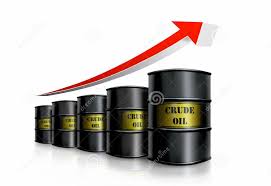Crude oil has been one of the main factors contributing to the problem of uncontrollable inflation worldwide. When Russia attacked Ukraine, uncertainty about supplies drove prices to almost $130 per barrel. However, when the market saw that there were no global oil supply issues, the price dropped significantly from June of the previous year to June of the current year. But record global demand and a strong global production cut by OPEC+ have brought back the ghost of $100 per barrel. This may indicate that the fight against inflation is far from over.
Huge Deficit and Further Production Cuts
OPEC+ had already reduced production, but with a significant price drop, they decided to intervene. In April, the entire expanded cartel decided to reduce its production target by just over 1 million barrels per day (brk/day). It’s worth noting that at that time, many cartel countries struggled to ramp up production after the initial cuts during the pandemic. The market was skeptical about the effect of this action, so only after further cuts in June did prices begin to bounce back. But that’s not all! During the summer, Saudi Arabia announced an additional voluntary cut of 1 million brk/day, and Russia cut exports by 0.3 million brk/day. Both of these actions have been extended to the end of this year. The market had earlier expected a deficit of 2 million brk/day by year’s end, but it’s now clear that this deficit will be even greater!
Such a massive deficit was last seen in 2007-2008 when prices soared to nearly $150 per barrel. Of course, back then, supply couldn’t keep up with growing demand, while now, the supply is artificially limited. Still, we currently see a record demand above 100 million brk/day, so with an oil shortage, prices continue to rise, and nobody expects major declines.
Biden has no Emergency Solution
Last year and early this year, the United States vigorously fought to lower market prices. It must be admitted that for some time, this worked very well. The US tapped into its vast oil reserves, established following the oil crises 40 years ago. At one point, US government agencies were selling 1 million barrels a day. While this might not seem like much, the well-balanced market felt it quite distinctly. It should be stressed that these reserves were created for a “rainy day.” Even though the US is currently the world’s largest oil producer, it’s not self-sufficient. Releasing these reserves was politically motivated – Biden wanted low prices for the midterm elections. Reserves have been drained to levels not seen since the 1980s, and American producers, even with fairly high prices, are reluctant to invest heavily in production expansion due to the restrictive policies of the current administration. Thus, a scenario of commercial inventories dropping to their lowest levels since 2015 seems almost certain.
Huge Price Increases
For a long time this year, oil was traded at lower levels than in the corresponding period a year earlier, leading to rapid inflation containment. That’s in the past now. Current prices are even 15% higher than in September of the previous year and over 40% higher than the local lows of March or May this year. Looking at futures contracts, we see a massive short-term demand surge for the commodity with limited supply. Future contracts are priced noticeably lower, indicating “backwardation.” Of course, if oil production doesn’t increase significantly next year, prices could remain high. On the other hand, the OPEC+ cartel knows it can’t lead to demand destruction, something that happened in 2008 or in June of the previous year when prices quickly dropped from around $130 to $100 per barrel. That’s why we probably shouldn’t expect further excessive price increases and their maintenance above $100. This level will likely be broken, although stabilization and potential OPEC+ policy adjustments are expected afterward. Of course, if a recession were to occur, driven by concerns about excessively high oil prices, prices could drop quite drastically. However, without this, OPEC+’s ongoing supply restrictions will likely result in high prices, at least until the end of this year.
Why only until the end of this year? Saudi Aramco plans a second stock issuance worth up to $50 billion. It’s clear that they’ll get the best price with high oil levels. Additionally, a potential slowdown in demand from China next year and slowing growth related to maintaining high-interest rates are expected.









